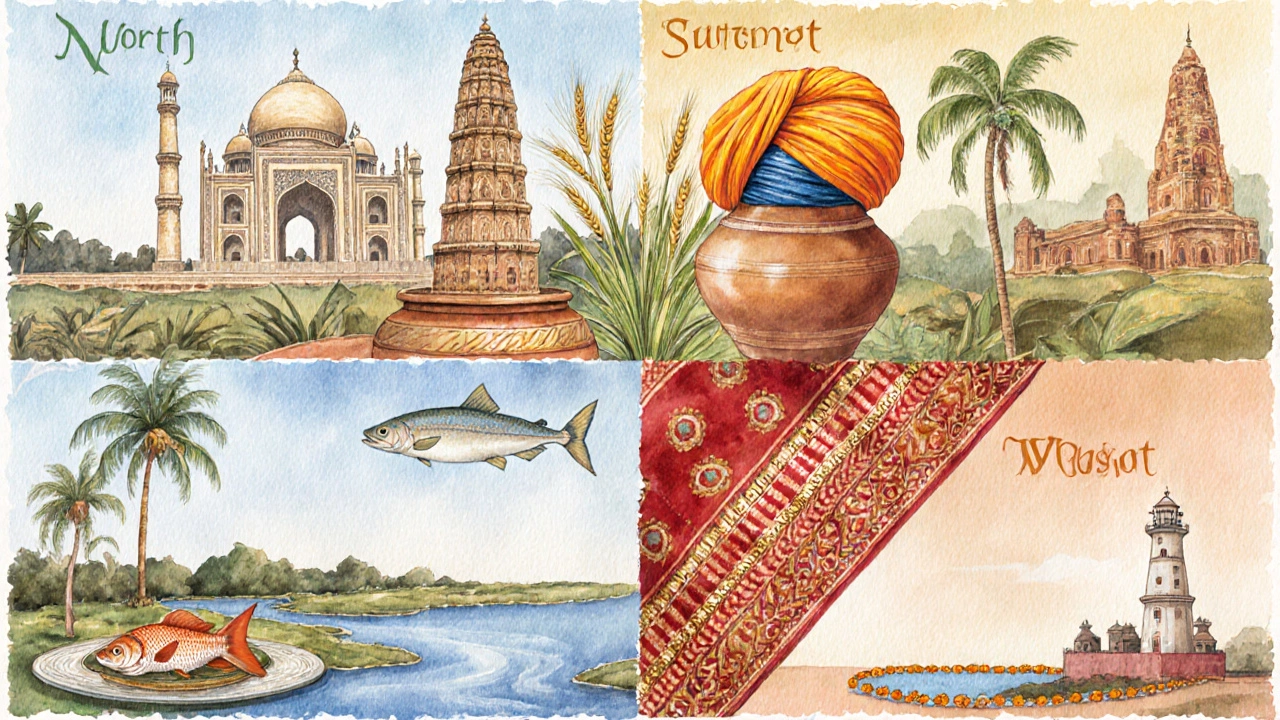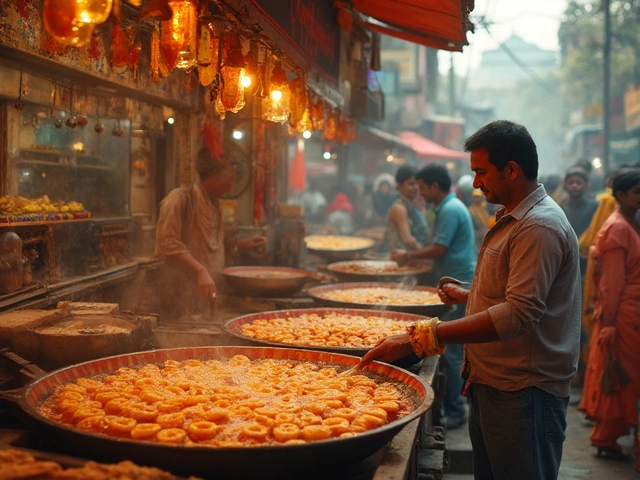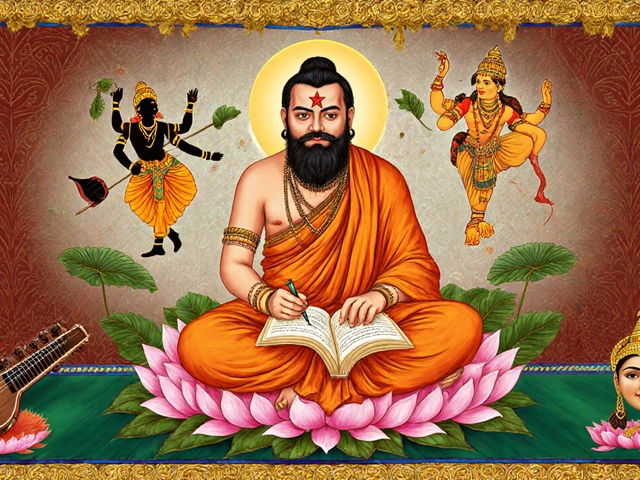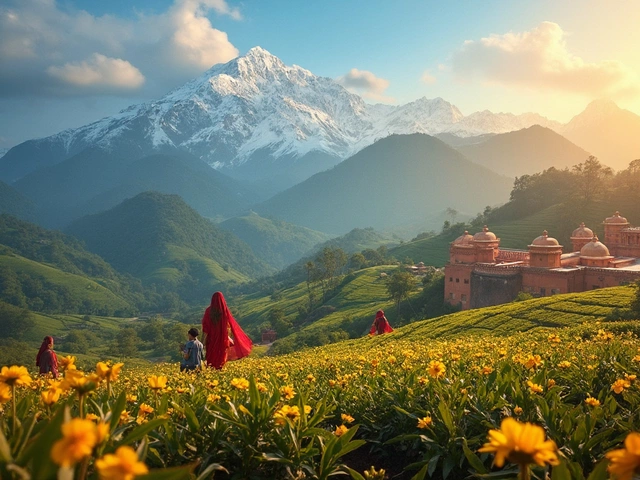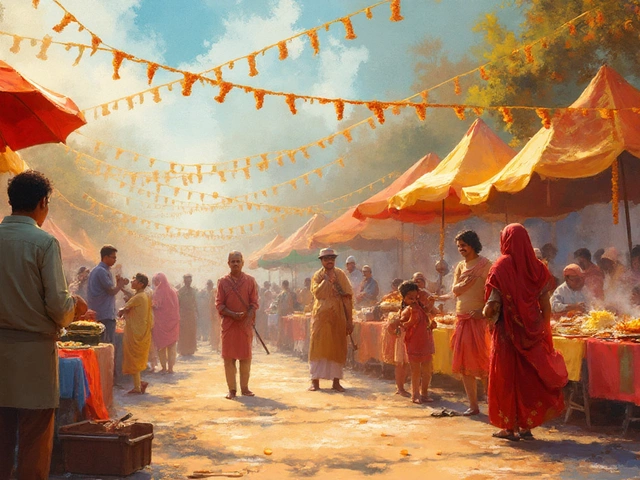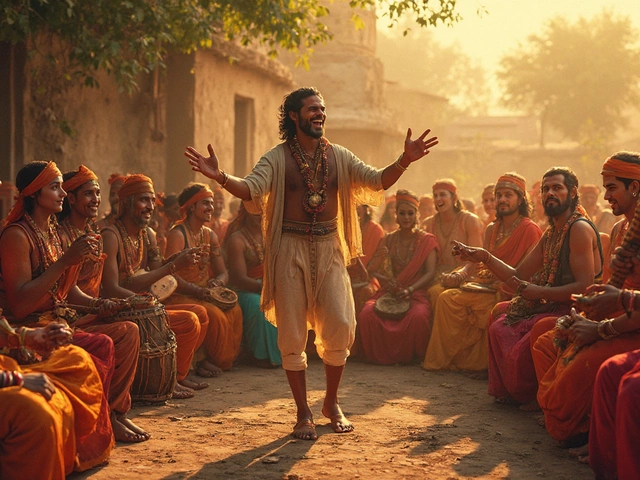When you hear “India”, you probably picture a kaleidoscope of colors, languages, and traditions. India's cultural zones are the four broad cultural regions that shape that mosaic-North, South, East and West. Each zone blends history, language families, religious practices, and everyday customs into a distinct flavor that still feels unmistakably Indian.
Why the Four‑Zone Model Works
The four‑zone framework isn’t a modern marketing gimmick; it grew out of scholars mapping the subcontinent’s long‑term settlement patterns. Researchers notice two dominant language families-Indo‑Aryan in the north and east, Dravidian in the south-and see how those families line up with climate, cuisine, and historical empires. When you group states that share these core traits, the map naturally splits into four coherent cultural blocks.
North Indian Culture
North Indian culture is anchored by the Indo‑Aryan language family, with Hindi, Punjabi, and Urdu spoken across the plains. Historically, the region hosted the Mauryan, Gupta, Mughal, and British empires, which left a layered legacy of art, architecture, and courtly etiquette.
- Language family: Indo‑Aryan
- Dominant religions: Hinduism, Islam, Sikhism
- Typical clothing: Salwar‑kameez, kurta‑pyjama, turbans for men
- Key states: Uttar Pradesh, Punjab, Haryana, Rajasthan, Delhi, Himachal Pradesh, Jammu & Kashmir
- Signature festivals: Diwali, Holi, Baisakhi, Navratri
Food reflects the climate-wheat‑based breads like roti and paratha dominate, alongside rich gravies such as butter chicken and paneer tikka. Music leans toward Hindustani classical styles, with instruments like the sitar and tabla.
South Indian Culture
South Indian culture revolves around the Dravidian language family: Tamil, Telugu, Kannada, and Malayalam. The region nurtured powerful dynasties such as the Cholas, Vijayanagara, and the Mysore Kingdom, each leaving a mark on temple architecture and visual arts.
- Language family: Dravidian
- Dominant religions: Hinduism, Christianity, Islam (minor)
- Typical clothing: Lungis, dhotis, silk sarees with gold borders
- Key states: Tamil Nadu, Kerala, Karnataka, Andhra Pradesh, Telangana
- Signature festivals: Pongal, Onam, Ugadi, Vishu
The cuisine is rice‑centric, featuring dishes like dosa, idli, sambar, and coconut‑laden curries. Classical Carnatic music, with its intricate ragas, and dance forms such as Bharatanatyam and Kuchipudi, are hallmarks of the south.
East Indian Culture
East Indian culture sits at the confluence of Indo‑Aryan and Tibeto‑Burman influences. Bengali, Odia, and Assamese languages dominate, each with a rich literary tradition dating back centuries. The region experienced early contact with European traders, shaping its art, cuisine, and social customs.
- Language family: Indo‑Aryan (Bengali, Odia) & Tibeto‑Burman (Sikkimese)
- Dominant religions: Hinduism, Islam, Christianity, Buddhism
- Typical clothing: Cotton sarees with intricate kantha work, dhotis
- Key states: West Bengal, Odisha, Bihar, Jharkhand, Assam, Tripura, Meghalaya, Sikkim
- Signature festivals: Durga Puja, Rath Yatra, Bihu, Poush Parbon
Rice and fish dominate the diet, with delicacies like macher jhol (fish curry) and mishti doi (sweet yogurt). The region is also home to classical music traditions-Rabindra Sangeet in Bengal and Odissi music in Odisha.
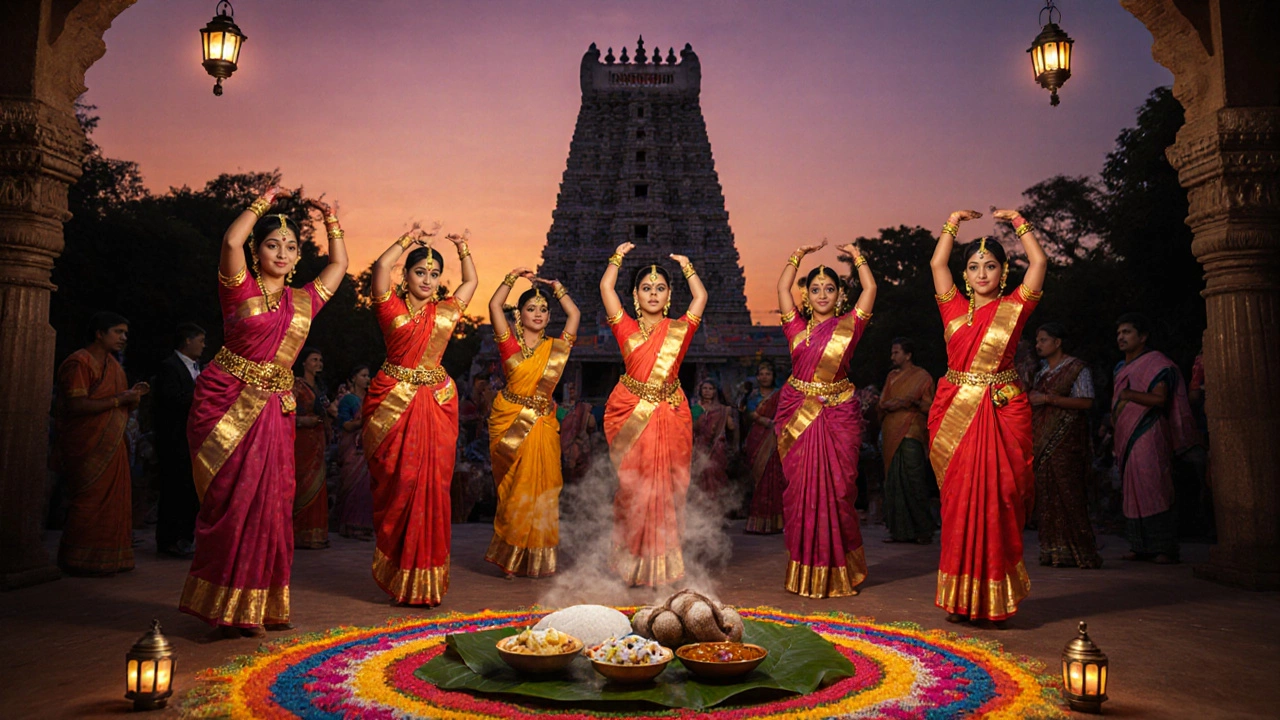
West Indian Culture
West Indian culture blends the arid desert vibe of Gujarat with the coastal vivacity of Maharashtra and Goa. Languages include Gujarati, Marathi, and Konkani, each entwined with trade‑driven histories that welcomed Persian, Arab, and Portuguese influences.
- Language family: Indo‑Aryan
- Dominant religions: Hinduism, Islam, Christianity (Goa), Jainism
- Typical clothing: Bandhani textiles, dhoti‑kurta, Goan dresses
- Key states: Gujarat, Maharashtra, Goa, Rajasthan (western part)
- Signature festivals: Navratri (Garba), Ganesh Chaturthi, Diwali, Holi
The food showcases a spectrum-from the spicy dhokla of Gujarat to the coastal seafood of Goa. Folk music like Lavani and devotional bhajans echo through village squares.
Comparative Snapshot of the Four Zones
| Attribute | North | South | East | West |
|---|---|---|---|---|
| Primary language family | Indo‑Aryan | Dravidian | Indo‑Aryan / Tibeto‑Burman | Indo‑Aryan |
| Dominant religions | Hinduism, Islam, Sikhism | Hinduism, Christianity | Hinduism, Islam, Christianity, Buddhism | Hinduism, Islam, Christianity, Jainism |
| Staple grain | Wheat (roti, naan) | Rice (idli, dosa) | Rice (pulao, fish curry) | Wheat & rice (paratha, bhakri) |
| Representative dress | Salwar‑kameez, turbans | Silk saree, dhoti | Cotton saree, kantha work | Bandhani, dhoti‑kurta, Goan dresses |
| Signature art form | Miniature painting, Mughal architecture | Temple sculpture, Bharatanatyam | Terracotta, Rabindra Sangeet | Bandhani textiles, Garba dance |
How the Zones Influence Everyday Life
Understanding the four zones helps you predict everything from the dinner you’ll be served to the etiquette expected at a wedding. In the north, greeting elders with a “Namaste” and offering sweets like jalebi is customary. In the south, family meals are often served on banana leaves, and a respectful “Vanakkam” initiates conversations. East Indian households may start a feast with lentil‑based pitha, while West Indian hosts might greet guests with a glass of feni or a garland of marigold.
Travelers can also tailor their itinerary. If you crave classical music, a sitar concert in Delhi (north) contrasts sharply with a Carnatic recital in Chennai (south). Architecture buffs will find the stone carvings of Khajuraho (north) very different from the Dravidian gopurams of Madurai (south) or the colonial Portuguese homes of Old Goa (west).
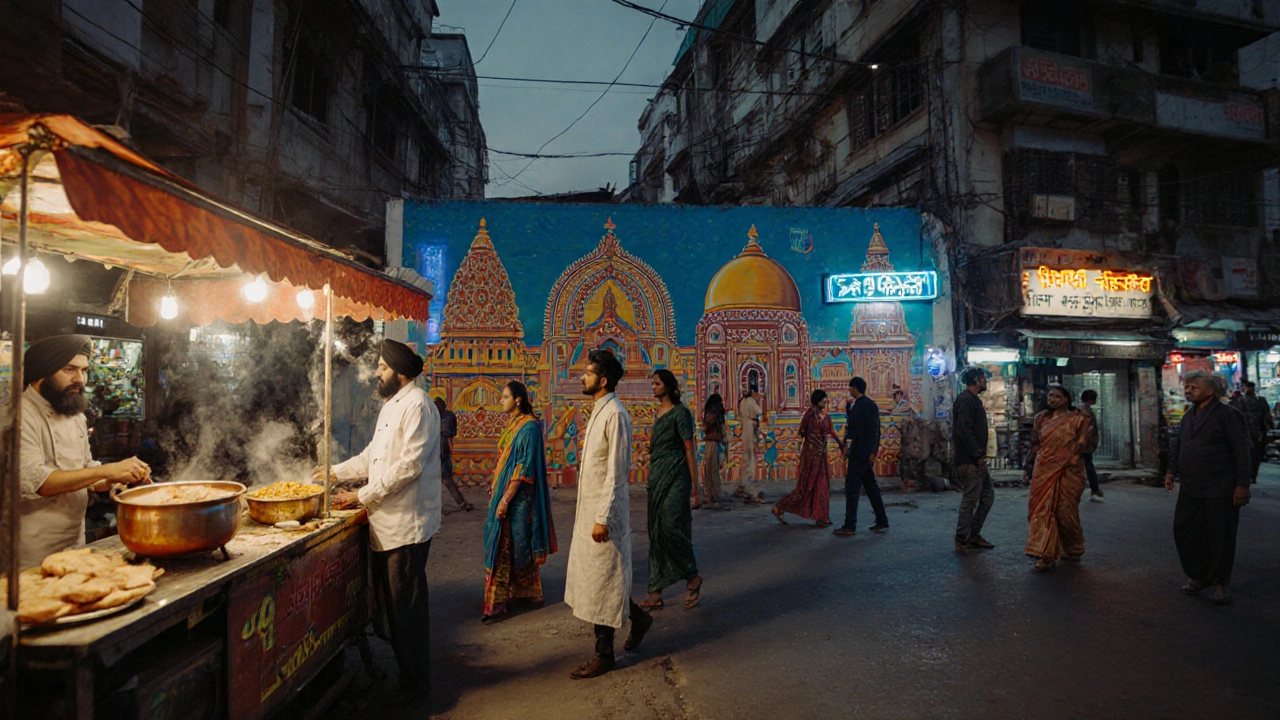
Common Misconceptions
Many think India is a single cultural block, but the four‑zone model proves otherwise. A frequent myth is that all Indians wear the same sari; in reality, the fabric, drape, and motifs vary dramatically. Likewise, cuisine is not interchangeable-north Indian butter chicken won’t taste the same when cooked with coconut milk, a staple in the south.
Another misconception is that language equals religion. While Hindi speakers are often Hindu, the north also has large Muslim populations speaking Urdu, and Bengali speakers span Hindu, Muslim, and Christian faiths. Recognizing these nuances prevents stereotypes and enriches cross‑cultural dialogue.
Practical Tips for Engaging with Each Culture
- Learn a few local greetings. Simple phrases like “Sat Sri Akaal” (Punjab) or “Namaskaram” (Kerala) go a long way.
- Respect dress codes. In many northern temples, covering shoulders is required; in the south, removing shoes before entering homes is standard.
- Adapt your palate. When invited to a Bengali thali, expect sweet‑sour flavors; a Gujarati thali will be largely vegetarian with subtle spice.
- Observe festival etiquette. During Durga Puja, avoid stepping on the pandal’s main steps; during Ganesh Chaturthi, refrain from touching the idol’s trunk without permission.
- Ask before photographing. Rural communities, especially in tribal parts of the east, may consider photography intrusive.
Future Trends: How Modernity Is Blending the Zones
Urban migration, digital media, and pan‑Indian cinema are gradually weaving the zones together. Netflix series now feature characters from Delhi and Chennai in the same storyline, while fusion restaurants blend tandoori naan with South Indian rasam. Yet, each zone retains its core identity, ensuring that the cultural tapestry stays vibrant rather than homogenized.
Quick Recap of the Four Cultural Zones
- North: Indo‑Aryan, wheat‑based cuisine, Mughal heritage.
- South: Dravidian, rice‑centric meals, temple architecture.
- East: Mixed language families, literary richness, river‑based festivals.
- West: Trade‑influenced arts, diverse religious mix, coastal flavors.
What defines the four main cultural zones of India?
The zones are defined by language families, historical empires, dominant religions, typical cuisine, and regional customs. North follows Indo‑Aryan roots, South is Dravidian, East mixes Indo‑Aryan and Tibeto‑Burman, and West aligns with Indo‑Aryan but adds coastal and trade influences.
Which Indian state belongs to the East zone?
West Bengal is a prime example of an East Indian state, known for its Bengali language, Durga Puja celebrations, and fish‑based cuisine.
Do the cultural zones affect business practices?
Yes. Negotiation styles, holiday calendars, and consumer preferences vary. For instance, north Indian markets may prioritize bulk wheat products, while south Indian retailers focus on rice and coconut‑based items.
Can I experience all four zones in a single trip?
A well‑planned itinerary covering Delhi (north), Chennai (south), Kolkata (east), and Mumbai or Ahmedabad (west) can give you a snapshot of each zone’s hallmark food, dress, and festivals within two weeks.
How do festivals differ across the zones?
While Diwali is celebrated nationwide, each zone adds local twists: north Indians light firecrackers, south Indians emphasize oil‑lamp rangoli, east Indians create intricate alpana designs, and west Indians perform Garba dances.
